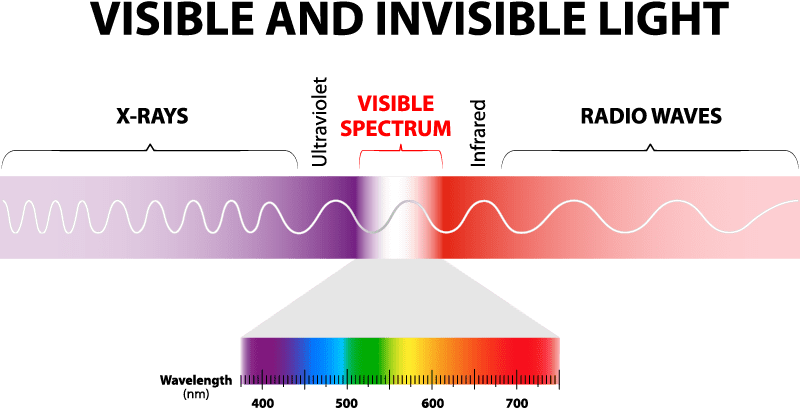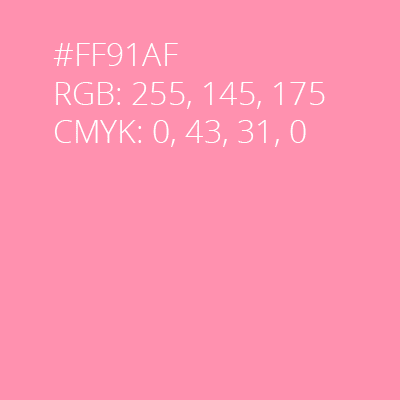Color perception is an important aspect of our sensory experience that affects our emotions, cognition, and behavior. The interaction between light, the eye, and the brain shapes our perception of color. Understanding how color perception works is crucial for fields such as marketing, design, and art, as well as for scientific research into visual perception.
In this article, we will give an introduction to color perception by exploring its fundamentals, including the physics of light, the anatomy of the eye, and the neural processes involved in processing color. We will also discuss the impact of culture, language, and individual differences on color perception. By the end of this article, readers will have a better understanding of the complexities of color perception and how it shapes our perception of the world around us.
Now on to an important question; what is your favorite color? Do you like that same color for all items? You may want bright red for a sports car, but would that same color be acceptable for your house?
We give little thought to it, but the colors that we see can impact our thoughts and our behaviors. This includes things like the food we eat (would you eat a black orange?) how we behave in the presence of colored lights (is that an ambulance behind me?), to which clothes we choose to wear (am I going to a professional meeting or on a romantic date?). What is it about color that affects our choices?
There has been significant research on how color affects our emotions (e.g. [1, 2]). Understanding how we interpret colors along scales such as positive or negative, warm or cool has been done to comprehend how color make us feel in certain situations. For example, understanding how colors make us feel in shopping/retail/restaurant environments has been an area of interest for marketing groups to encourage appetite or to help customers feel relaxed [3].
While these results offer great insight, it’s helpful to have a background from which to understand how these findings arise. Below, we will explain color perception and show how it influences our emotions in sometimes unexpected ways.
Visible Light and Color Perception
Our ability to percieve color depends on the wavelength of light. The light wavelengths that are in the visible spectrum for humans ranges from 400-700nm (See Figure 1.). There are many wavelengths that our eyes cannot see, like X-rays or radio waves.

The wavelengths of light that we can see are absorbed by cells (known as photoreceptors) in the back of the eye. The photoreceptors that are sensitive to color and bright light are called cone cells, whereas the photoreceptors which are not sensitive to color and work better in low light conditions are called rod cells.
Color and Behavior
Color vision is an entire area of scientific study within the realm of vision science; whereas, examining how color influences us and how we use color to display our internal state is of interest to psychology.
We not only aesthetically enjoy a rich tapestry of color, but we also assign a variety of emotions to specific colors as well. Researchers from the University of Georgia studied college students for their color preferences, finding a wide range of predilections with differing justifications [2].
Various colors have even been used in order to try and affect the behavior of those who view it. For example, prisons have used Baker-Miller pink (No relation to the author of this blog; See Figure 2) on the walls as a method of abating aggression among inmates [4].
Researchers [4, 5] have also reported the color pink actually inhibits muscular strength and aggression in prison populations. Interestingly, some authors have criticized this finding as colors on the pink-end tend to be associated with red or orange which are often viewed as a bold, arousing colors and not traditionally associated with having a calming effect [6].
Other studies using the pink color in jail cells only found a reduction in aggressive behavior in the first few months of its use, and aggression increased over time [6]. There has been recent work that has called into question the usefulness of pink when implemented in prisons [7].

Outside of prison populations, color is used and studied to understand how it can influence those around the wearer. Red is often viewed as a sign of dominance in primates, while the same color can be viewed as a warning in other contexts [8]. Research has suggested that men are rated as more aggressive and more dominant when in pictured in red clothes versus grey or blue [8].
Interestingly, research suggests athletes wearing red have an advantage in sporting outcomes due to the color of their uniforms alone [9].
We tend to wear blues, blacks and greys for business affairs while more vibrant colors can be used in other social situations. Several experiments by Elliot and Niesta [10] demonstrated that men rate women in red to be more attractive. Another example is a study by Guéguen and Jacob [11] where men tipped waitresses more if they wore red.
Food Color and Perception
For several decades, food color has been studied to understand how people associate certain foods with color and whether people will buy food based on color [12].
Some examples of where colors violated what people expected for their food include clear cola or purple/green ketchup. These food alterations were widely considered failures and the products are no longer sold.
Researchers have found that food color is a powerful indicator of flavor association. In fact, certain foods are affiliated with a color and research has indicated that when beverage color and flavor are incongruent; often, people will misidentify the flavor to match the color [13].
There has also been consistent results regarding the addition of red coloring to foods and people’s rating the food or beverages as being sweeter the redder it appears (e.g. [14, 15]).
Conclusion
Color is all around us and may be used to influence how we feel, encourage specific behaviors, act as a social indicator or help identify foods and flavor. Understanding how color or other external stimuli affect us is important to study which can lead to greater insights into human behavior. iMotions software platform can allow researchers to objectively assess how various visual images and colors affect human performance. If you’d like to learn more about human behavior – both how it’s influenced and how it can be measured – download our free guide below:
Free 52-page Human Behavior Guide
For Beginners and Intermediates
- Get accessible and comprehensive walkthrough
- Valuable human behavior research insight
- Learn how to take your research to the next level

References
[1] Jalil, N. A., Yunus, R. M., & Said, N. S. (2012). Environmental colour impact upon human behaviour: A review. Procedia-Social and Behavioral Sciences, 35, 54-62.
[2] Naz, K. A. Y. A., & Epps, H. (2004). Relationship between color and emotion: A study of college students. College Student Journal, 38(3), 396.
[3] Singh, S. (2006). Impact of color on marketing. Management decision, 44(6), 783-789.
[4] Schauss, A. G. (1979). Tranquilizing effect of color reduces aggressive behavior and potential violence. Journal of Orthomolecular Psychiatry, 8(4), 218-221.
[5] Schauss, A. G. (1981). Diet, crime and delinquency (pp. 1-108). Berkeley, CA: Parker House.
[6] Pellegrini, R. J., Schauss, A. G., & Miller, M. E. (1981). Room color and aggression in a criminal detention holding cell: A test of the “tranquilizing pink” hypothesis. Journal of Othomolecular Psychiatry, 10, 174-181.
[7] Genschow, O., Noll, T., Wänke, M., & Gersbach, R. (2015). Does Baker-Miller pink reduce aggression in prison detention cells? A critical empirical examination. Psychology, Crime & Law, 21(5), 482-489.
[8] Wiedemann, D., Burt, Michael, Hill, R. A., & Barton, R. A. (2015). Red clothing increases percieved dominance, aggression and anger. Biology Letters, 11, 1-4.
[9] Hill, R., & Barton, R. (2005). Red enhances human performance in contests. Nature, 435(7040), 293-293. doi: 10.1038/435293a
[10] Elliot, A. J., & Niesta, D. (2008). Romantic red: red enhances men’s attraction to women. Journal of personality and social psychology, 95(5), 1150.
[11] Guéguen, N., & Jacob, C. (2014). Clothing color and tipping: Gentlemen patrons give more tips to waitresses with red clothes. Journal of Hospitality & Tourism Research, 38(2), 275-280.
[12] Garber, L., Hyatt, E., & Nafees, L. (2016). The Effects of Analogous Food Color on Perceived Flavor: A Factorial Investigation. Journal Of Food Products Marketing, 22(4), 486-500. doi: 10.1080/10454446.2015.1072866
[13] Spence, C., Levitan, C. A., Shankar, M. U., & Zampini, M. (2010). Does food color influence taste and flavor perception in humans?. Chemosensory Perception, 3(1), 68-84.
[14] Clydesdale, F. M., Gover, R., & Fugardi, C. (1992). The effect of color on thirst quenching, sweetness, acceptability and flavor intensity in fruit punch flavored beverages. Journal of Food Quality, 15(1), 19-38.
[15] Pangborn, R. M. (1960). Influence of color on the discrimination of sweetness. American Journal of Psychology, 73(2), 229-238.










